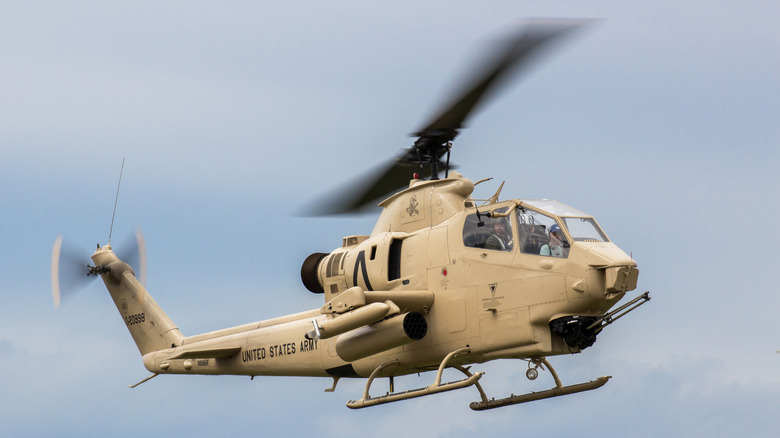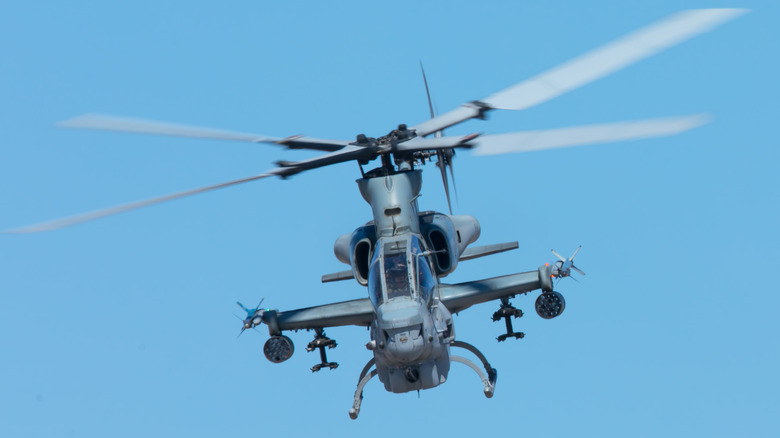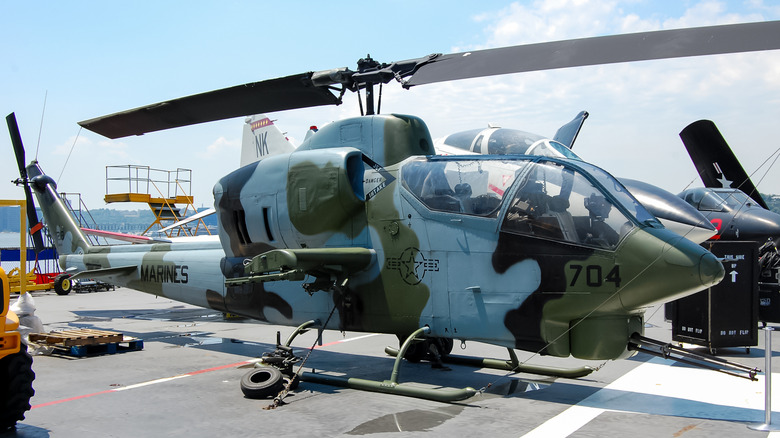How The AH-1 Cobra Attack Chopper Evolved From The UH-1 Huey Military Transport
The Vietnam War brought to light the necessity of a specialized, armed aircraft to assist and supply fire support for transport helicopters in combat situations. In response, Bell Helicopter, the company that manufactured the Huey Iroquois, submitted a proposal to the U.S. Army's Advanced Aerial Fire Support System program. Instead of offering an all-new helicopter, its entry was a modification of the Army's workhorse Huey helicopter to circumvent the need for another design competition from the Army.
Development of the new attack helicopter started in 1965 using a design by Mike Folse, an engineer with Bell at the time. The proposed chopper was an amalgamation of designs from existing Bell helicopters including structural elements. The rear end and tail boom were from the UH-1 while the boom and tandem seating arrangement came from the D-225 Warrior. To save on time and development costs, the aircraft had a substantial number of parts reused from the UH-1 Huey, including the tail rotor, drive shaft, transmission, and engine, and 80% of its components were already listed in the government inventory as Huey parts.
Bell's proposal strategy paid off because it was awarded a contract for 110 Cobras by 1966. By the end of the same year, the order was increased to 500 , and by 1967, the first batch of choppers arrived in Vietnam. As a testament to its rapid development and production, the first 12 units were airlifted to Bien Hoa Airbase by C-133 Cargomasters, just two years after its first flight.
Hunter killer helicopter
The United States Army initially referred to the chopper as the Huey Cobra, highlighting its connection to the earlier Huey models, but that was shortened to Cobra in the field. It was the first helicopter gunship designed specifically for military use and served as the cornerstone of U.S. military aircraft attack operations from its 1967 debut in South Vietnam until the AH-64 Apache challenged it as the ultimate attack helicopter in the 1980s. Known as G-Model, the first generation AH-1 Cobras were fully armed with two 2.75-inch rocket pods, a 7.62-mm minigun, and a 40-mm grenade launcher.
However, newer versions dropped the rocket pods in favor of the TOW missile system. The Cobra was powered by a Lycoming T53-L-703 engine that generated 1,800 shaft horsepower. Compared to other attack helicopters of the era, the G model was small. It was only 44.7 feet long and 13 feet high and had a two-bladed rotor with a diameter of 44 feet. Meanwhile, the Soviet Mil-Mi-24 was 57 feet long and around 21 feet tall while its main rotor had a diameter of roughly 59 feet.
Upon its deployment during the Vietnam War, the AH-1 Cobra was regarded as an excellent helicopter on the battlefield because of its agility, firepower, and versatility. Its roles included hunter-killer, escorting other helicopters, and providing fire support to ground forces. As a military aircraft, the lasting impact of the Cobra showcased helicopter capabilities, which greatly expanded their usage in later military operations.
Half a century and counting
Bell produced numerous versions of the Cobra, adding some with two engines that included the AH-1 SuperCobra attack helicopter for the Marine Corps as well as the AH-1J, AH-1T, and the AH-1W. Each version tested out different weapon systems like the enhanced Cobra Armament System (ECAS). The most recent model and SuperCobra replacement, the AH-1Z Viper, has a glass cockpit and a new four-bladed composite rotor system. Around 1,100 AH-1G's were made between 1967 and 1973, 270 of which were destroyed.
Cobras in Vietnam were extensively used, logging more than 1 million operational hours. Unfortunately 231 pilots lost their lives or were MIA. The AH-1 Cobra continued to participate in military operations decades after Vietnam, seeing use in Somalia and the Iran-Iraq War. Overall, the Cobra had a lengthy production run of 55 years, serving as one of the most formidable aircraft in the American military.
As the world's first dedicated attack helicopter, it changed how rotary-winged aircraft are used in military operations. The Army eventually retired the original AH-1 Cobra in 1999, and the USMC replaced the Super Cobra variant after 34 years of service in 2020 with the AH-1Z Viper. The Marine Corps recently reactivated a retired light attack helicopter unit that will fly the Viper along with the new UH-1Y Venom, which could mean that the modern version AH-1 Cobra will remain in service for many years to come.


